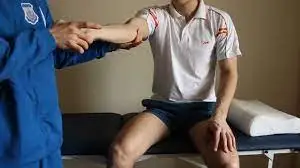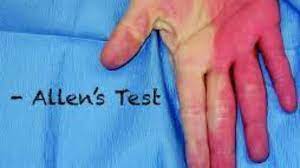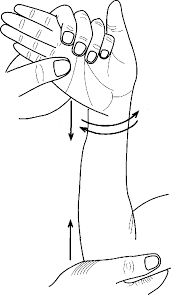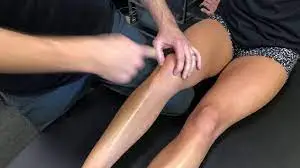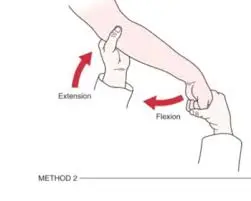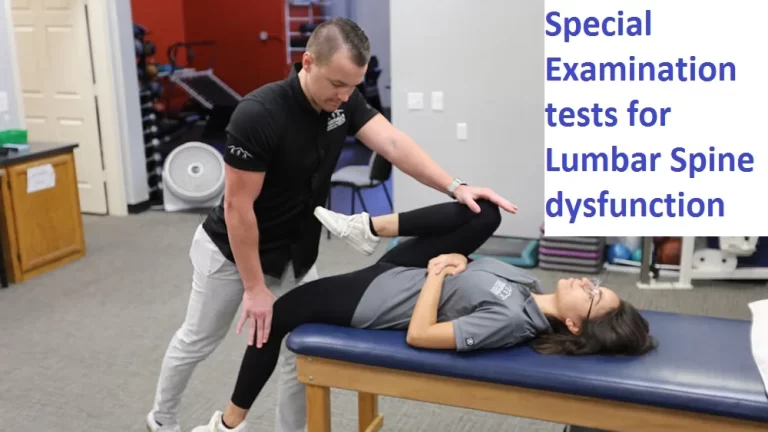H and I Test
Table of Contents
What is a H and I Test?
The H and I Test is a specific physical examination used by physiotherapists, chiropractors, and other healthcare professionals to assess the stability and integrity of the lumbar spine and the surrounding musculature. It’s particularly useful for diagnosing issues related to the lumbar facet joints, which can be a source of lower back pain.
Overview:
- The purpose of this H and I stability test is to assess lumbar instability in the clinic.
- The therapist administers these clinical tests when a patient complains of back discomfort.
- These H and I stability tests were used during the assessment’s examination phase.
Objectives:
- The purpose of this test is to evaluate lumbar spine muscular spasms.
- To examine the lumbar spine instability.
The procedure of the test:
- The H movement is the first component of the H and I stability tests.
- The patient is positioned near the middle of the H while in their typical resting position.
The side that is pain-free is tried first. - The examiner has directed the patient to flex their lumbar side as much as possible, with assistance from the clinician (the side of H).
- The patient is next instructed to shift into extension (the back of the H) and then flexion (the front of the H).
- Extension would be performed before flexion if flexion caused more discomfort than extension.
- After that, the patient returns to neutral and does the same movements on the other side.
- With the help of one hand, the examiner can stabilize the pelvis; while the other hand can guide the movement at the shoulder joint.
- I movement makes up the second portion of the test.
- The patient would be positioned in the center of the I when they are standing in their typical resting posture.
Flexibility and extension without pain are tested first. - The patient is instructed to forward flex their lumbar spine until their hips begin to move, under the supervision of the clinician [upper portion of I].
After a change in direction, the patient is led to bend to the side that is pain-free first, then return to neutral and bend to the side that is opposite.
The patient leans to the side after completing the opposing movement and getting back to neutral standing.
If there was a hypermobile, at least two of the movements would be not allowed. - One quadrant will once more be impacted by instability, but only one of the moves.
For example, when the patient attempts forward flexion—a component of forwarding flexion—and has spondylolisthesis instability in anterior shear, shear or slip occurs, and there is minimal movement during the attempted side bending/flexion.
The side bending is normal and the subsequent forward flexion is complete if the H is performed since the shear happens in the second phase. - The I movement is therefore restricted in this instance, whereas the H movement is not.
These stability tests for H and I
The test is mostly used for structural instability, although if there is a loss of control, one of the movements may show signs of instability. - The loss of control happens somewhere in the accessible ROM, however, in this situation, the end range is typically normal.
Positive sign:
Pain on at least 2 segments on the same quadrant or Pain on 1 segment only 1 quadrant.
FAQs
People with low back pain (LBP) who can benefit from trunk stabilization exercises can be identified using the prone instability test. While there is a theory that activating muscles during the leg-raising phase of the prone instability test increases spinal stiffness and decreases discomfort, there is not enough data to support this theory.
Individuals who are more genetically predisposed to it as well as those whose bodies are overworked may experience this. Poor posture, inadequate physical health, weak muscles, a sedentary lifestyle, extra body weight, injuries, etc. all exacerbate these degenerative issues.
About 80% of Americans will experience low back pain at some point in their lives. Mechanical low back pain may be caused by dynamic lumbar instability. Dynamic lumbar instability is defined as a lack of spine rigidity.
The active flexion test is a catch indication for instability.
After bending as far forward as feasible, the patient returns to the neutral position. The test is deemed successful if the patient is unable to resume the neutral posture. This is a provocation test.
References:
Ladva, V. (2022b, February 12).Stability tests H and I: – Mobile Clinic for Physiotherapy. Mobile Physiotherapy Clinic. https://mobilephysiotherapyclinic.in/h-and-i-stability-tests/


